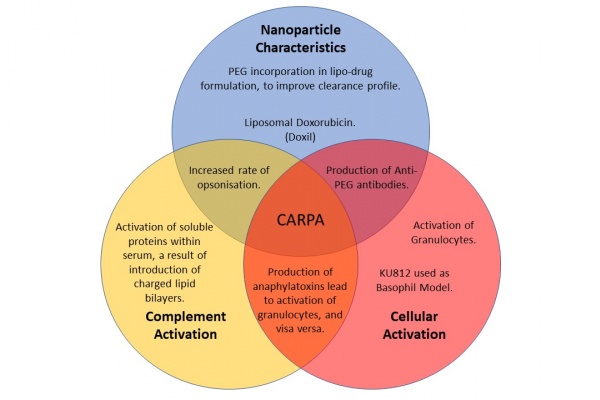Publication: Application of KU812 cells for assessing complement activation related effects by nano(bio)materials
The team at the University of Liverpool have recently published the results of a small interlaboratory study, on the use of a model of human basophils for assessing the consequences of complement activation in response to nanoparticle exposure. Complement activation is an obstacle for many nanotherapeutic delivery systems, but lipidic nanoparticles in particular. However, it is unclear that even if nanoparticles may activate complement what the cellular consequences, given the complexity (summarised in figure) linked to clinical reactions to these materials, may be. Basophils are key to allergic, and pseudo-allergic, reactions but can be difficult to isolate in sufficient quantities for immunological studies. The Liverpool team have previously used a human basophil cell line (KU812) to examine responses to lipidic nanoparticles, linked to adverse reactions. They showed that certain physicochemical characteristics are associated with basophil activation, and that this may prove a useful tool in nanotherapeutics development. To support that idea, they conducted a small interlaboratory comparison of the protocol, with their collaborators at RIVM, to examine the robustness and transferability of the method.
The results were very promising, and show the applicability of the method in nanotherapeutic characterisation, particularly for use in the SINPAIN project.
You can read the full publication here.
